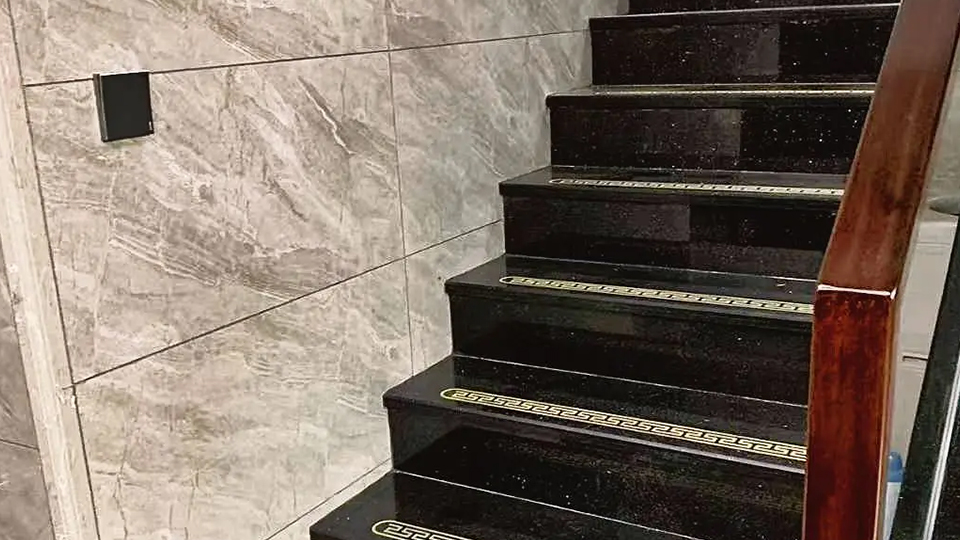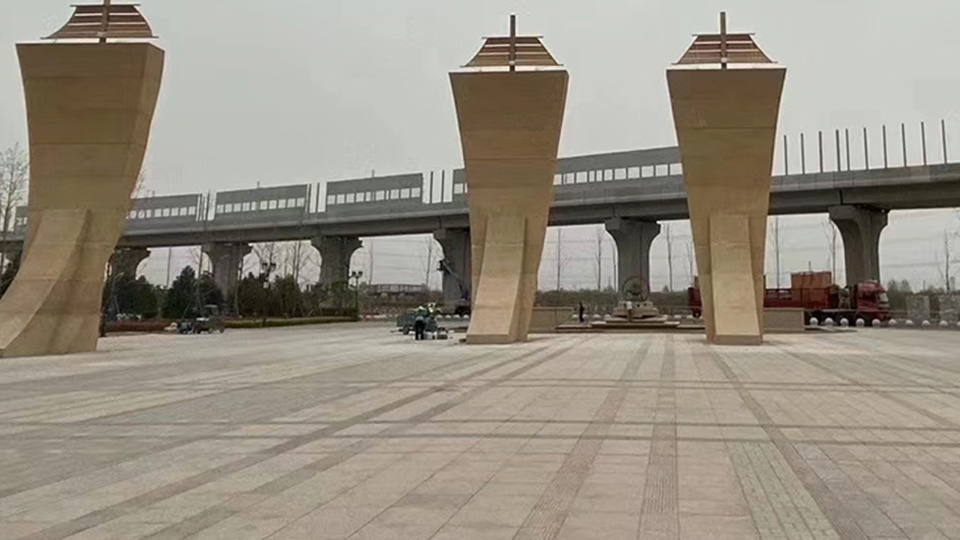

The Science of Granite: A Look at Its Composition
To understand how granite reacts to heat, we must first understand what granite is. Geologically, granite is an intrusive igneous rock, meaning it was formed from the slow cooling of magma deep beneath the Earth's surface. This slow cooling process allows for the formation of large, visible mineral crystals. The primary minerals that make up granite are:
Quartz: A hard mineral with a high melting point, contributing to granite's overall durability.
Feldspar: A common mineral that gives granite its color and can be more susceptible to thermal stress than quartz.
Mica: A softer, layered mineral that can add a reflective sparkle to granite but is more vulnerable to heat.
The specific combination and concentration of these minerals vary depending on the quarry from which the granite was mined. This is why every slab of granite is unique, and its thermal properties can differ slightly.
Granite's Thermal Resistance: The Key Property
Granite is famous for its high heat resistance. Its formation under immense heat and pressure gives it a natural ability to withstand high temperatures without melting or scorching. The melting point of granite is extremely high, ranging from approximately 1,215 to 1,260 degrees Celsius (2,219 to 2,300 degrees Fahrenheit), far exceeding the temperature of a pan fresh off the stove. The average temperature of a pan after a few minutes on a burner is typically around 200−300 degrees Celsius (400−575 degrees Fahrenheit). Therefore, from a purely material science perspective, placing a hot pan on a granite countertop should not cause it to melt or combust.
The Risks: The Real Dangers of Thermal Shock
While a hot pan won't melt your granite, there are significant risks that make placing hot items directly on the surface a bad idea. The primary danger is not the heat itself, but the rapid change in temperature, a phenomenon known as thermal shock.
Thermal shock occurs when a material experiences a sudden and extreme temperature change. While granite is strong, it is not impervious to this stress. When a hot pan is placed on a cool granite surface, the top layer of the stone expands rapidly while the bottom layer remains cool. This creates internal stress within the slab. Over time, or with a sufficiently large temperature differential, this stress can lead to:
Cracking: The most feared outcome is the development of a crack. This can range from a hairline fracture that is barely visible to a full-blown crack that compromises the structural integrity of the countertop. Cracking is more likely to occur on thinner slabs, near the edges, or around cutouts for sinks or cooktops, which are already points of stress.

Discoloration or "Clouding": The intense, localized heat from a hot pan can sometimes cause a phenomenon known as "clouding" or "blanching." This is when the color of the granite fades or a hazy spot appears where the pan was placed. This is often a result of a breakdown in the minerals or the sealant, which we will discuss next. While not as severe as a crack, it is an unsightly and often permanent form of damage.
The Role of Sealants: The First Line of Defense
A critical component of a granite countertop's maintenance and protection is the sealant. Most granite countertops are not sealed in their natural state. They are porous, meaning they have microscopic pores that can absorb liquids and harbor bacteria. To prevent staining and make them more hygienic, installers apply a sealant to the surface.
This sealant is typically a resin or polymer-based product. While it's excellent at protecting against stains, it is a key weakness when it comes to heat. The sealant's melting point is significantly lower than that of the granite itself. Placing a hot pan on the surface can:
Melt the Sealant: The heat can cause the sealant to melt and bubble, leaving a noticeable blemish on the surface.
Burn the Sealant: The heat can scorch the sealant, creating a white or cloudy mark that is very difficult, if not impossible, to remove.
Break Down the Sealant: Even if the heat doesn't cause immediate visible damage, it can compromise the sealant's integrity, making the granite more susceptible to staining and etching in that spot in the future.
Best Practices and Recommendations
Given the potential risks, the official recommendation from virtually all countertop fabricators, installers, and stone care professionals is unequivocal: Do not place hot pans directly on your granite countertops.
Instead, homeowners should adopt a simple but effective set of best practices to protect their investment:
Always Use a Trivet or Hot Pad: This is the most important rule. A trivet, hot pad, or even a folded towel creates an air gap and a thermal barrier, preventing the direct transfer of heat to the countertop. This simple, inexpensive precaution is the best way to eliminate the risk of thermal shock and sealant damage.
Understand Your Granite: Some granite varieties are more susceptible to thermal shock than others. While it's not practical to know the exact mineral composition of your countertop, it's a good idea to err on the side of caution with all granite. For example, a light-colored granite with a high feldspar content might be more vulnerable than a dark, dense granite with a high quartz content.
Know Your Sealant: Understand the type of sealant your installer used and its properties. Some sealants offer a higher degree of heat resistance than others, but none are invincible. You should also be aware of the recommended re-sealing schedule, as an older, worn-out sealant will be even more vulnerable to heat damage.
Avoid Direct Flame: Never place a hot item with a direct flame on a granite countertop. This is an extreme risk for thermal shock and can cause severe damage. This is particularly important for items like Sterno cans or butane torches.
Be Wary of Slow Cookers and Other Appliances: While a slow cooker or Crock-Pot may not seem as hot as a pan from the stove, they can generate a significant amount of heat over a long period. This sustained heat can also cause problems, particularly for the sealant. It's a good practice to place a trivet or hot pad underneath these appliances as well.

What to Do If Damage Occurs
Despite the best precautions, accidents can happen. If you place a hot pan on your granite and notice damage, the first step is to assess the type and extent of the damage.
For Cracks: A significant crack requires professional attention. A stone restoration specialist may be able to fill the crack with a color-matched epoxy, but the repair may not be invisible, and the structural integrity may be compromised. The cost and outcome of the repair will depend on the size and location of the crack.
For Discoloration or Hazy Spots: If the damage is a white or cloudy spot, it's likely the sealant has been burned. In some cases, a professional can attempt to polish the surface and re-seal it. The success of this repair depends on the depth of the damage. If the damage is deeper than the sealant, it may be permanent. For minor blemishes, a poultice or a specific stone cleaner may help, but it's important to consult with a professional before attempting any DIY solutions that could worsen the problem.
Conclusion: A Simple Precaution for a Lasting Investment
To summarize, the answer to "Can you put hot pans on granite?" is a technical "yes," but a practical and highly recommended "no." While the granite rock itself has an incredibly high melting point and can withstand significant heat, it is vulnerable to thermal shock, which can cause cracking. The surface sealant, which is essential for protecting the granite from stains, is even more susceptible to heat damage, leading to discoloration and a compromised protective layer.
The simple act of placing a trivet or hot pad between a hot item and your granite countertop is a small precaution that eliminates all these risks. Granite is a significant investment that adds beauty and value to a home. By understanding its material properties and adopting a few simple best practices, homeowners can ensure their countertops remain pristine and durable for a lifetime. The peace of mind that comes from protecting this beautiful, natural stone is well worth the minimal effort.
Name: selena
Mobile:8613176910558
Tel:86-13176910558
Whatsapp:8619323167067
Email:409284553@qq.com
Add:Laizhou ,Shandong , Shandong Province, China